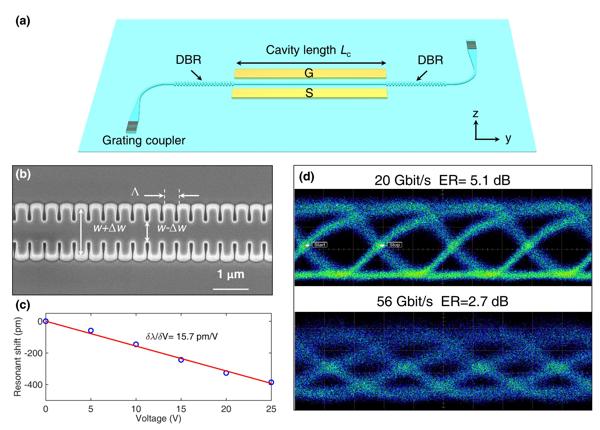With the rapid development of broadband centers, cloud-based services, the Internet of Things, and 5G services, network traffic is growing at a vigorous rate, which requires optical communication networks with higher capacity and lower power consumption. As the building block of optical communication networks, the function of the optical modulator is to realize the high-speed conversion of information from the electrical domain to the optical domain, and to convert data transmission from cable to ultra-low loss fiber. Lithium niobate (LiNbO3, LN) has been the dominant material platform for optical modulators widely used in optical fiber communications due to its excellent physical properties, such as its high electro-optic (EO) Pockels coefficient, low optical absorption, high intrinsic modulation bandwidth, and long-term material reliability. However, commercial LN modulators rely on titanium-diffused or proton-exchange waveguides. Such weakly confined optical waveguides are not beneficial to achieving strong electro-optic interaction. In the issue, such modulators have low modulation efficiency (~10V·cm) and large device sizes.
Recently, thin-film LN-on-insulator (LNOI) has emerged as a promising platform for high-performance integrated modulators, which inherits the material performance advantages of lithium niobate while provides strong optical confinement and thus high integration density. Previously, the research group led by Prof. Xinlun Cai had demonstrated a high-performance Mach Zehnder-type modulator (MZM) based on LNOI with low driving voltage, low optical loss and high electro-optic bandwidth. In these works, the modulation efficiency of integrated LN modulators with dry-etched LN waveguides has increased to ∼2V·cm, which is significantly higher than that of conventional modulators with ion-diffused or proton-exchanged waveguides. Even so, an integrated LN modulator in the traveling-wave Mach– Zehnder configuration still has modulation lengths of 1–2cm to achieve low-voltage energy-efficient modulation. Such device length is difficult to adapt to the urgent need for the compact size of optical transceiver modules. The lumped resonant modulators have smaller size and lower power consumption than the MZM modulators. In addition to the resonant LN modulator based on microring resonators, another type of resonant modulator that has not yet been demonstrated on an LNOI platform is the Fabry-Perot (FP) modulator. The FP modulator can provide higher sensitivity while avoiding mode hybridization caused by bending the waveguide in anisotropic X-cut LN materials.
The research group led by Prof. Xinlun Cai from Sun-Yat Sen University reported an integrated LN FP-based modulator. The length of the modulation region is only 800μm, which is much smaller than that of the MZM electro-optic modulator. The device features a low insertion loss (< 1.65 dB) and a high EO tuning efficiency of 15.7 pm/V. Also, experimentally confirmed its performance with non-return-to-zero (NRZ) data modulation up to 56 Gbit/s. The research results are published in Chinese Optics Letters, Volume 19, Issue. 6, 2021(M. Xu, et al., Integrated thin-film lithium niobate Fabry–Perot modulator).

(a) Schematic of FP modulator. (b) Scanning electron microscope (SEM) image of the DBR. (c) Electro-optic tuning efficiency (d) High-speed eye diagram measurement
The results suggest a new avenue for utilizing the excellent material properties of LN for very small footprints and a highly efficient optical modulator with good potential in future optical interconnects applications. The compact modulator is expected to integrate with other devices on the LNOI platform, such as wavelength conversion, optical frequency comb, and wavelength division multiplexing devices, to form more complex and power-efficient photonic integrated circuits.


